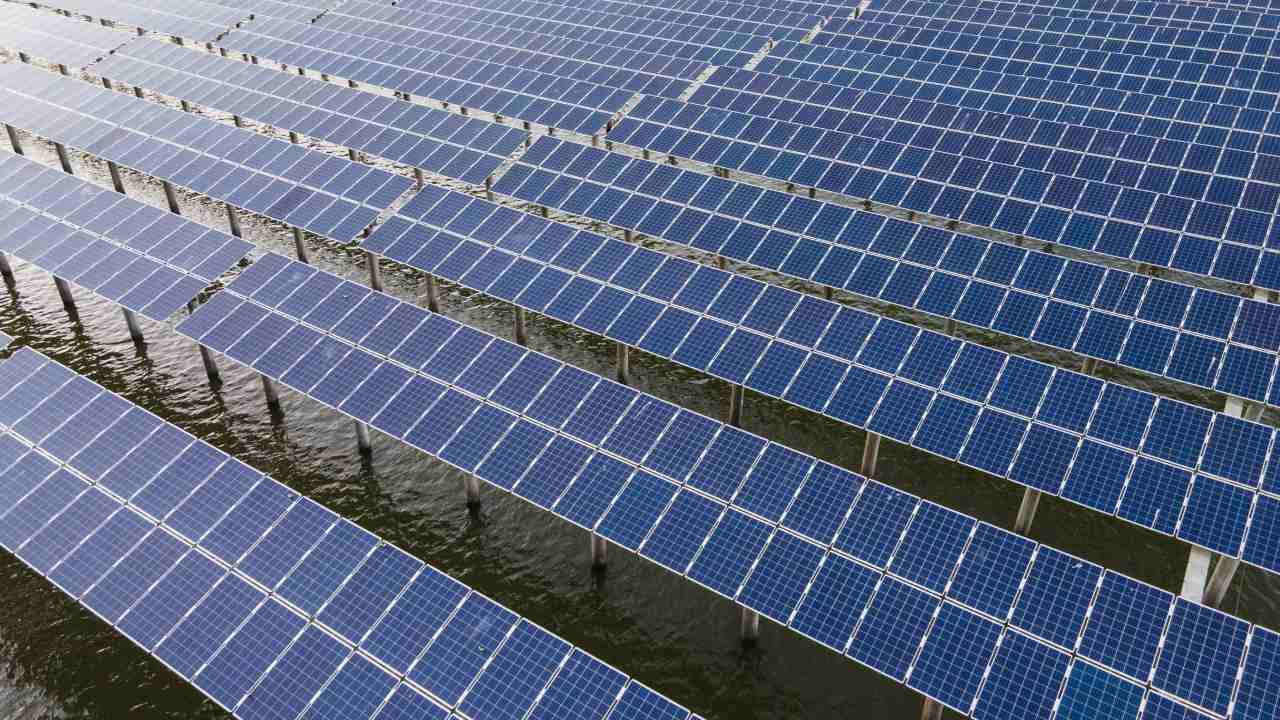Travelling around the globe might not have to cost the Earth

The last time you booked a flight online, you may have been offered the chance to ‘offset’ the carbon produced by your travel. This is due in part to recognition that the aviation industry is responsible for around 5% of human-made emissions resulting in climate change.
The efforts by this sector to respond to its environmental impact can range from switching fuels (from coal to biomass, for instance), more efficient combustion processes (by improving aircraft engines, for example), protecting forests or promoting sustainable development in local communities.
Now, in a potentially ground-breaking innovation for long-haul flights, a team of researchers at the Swiss Federal Institute of Technology, Zürisch (ETH Zurich) have developed an all-in-one solar-powered tower that’s able to use energy from the Sun’s rays to convert water and carbon dioxide into synthetic fuels.
Think: water + carbon dioxide = energy. Sound familiar? Well, it should. It’s what many plants do to make energy for themselves.
The ETH Zurich process has a lot in common, really, explains Dr Jessica Allen, a chemical engineer and renewable energy technologies expert at the University of Newcastle. Although in this case, “industrial photosynthesis might be a better term as this particular process doesn’t involve any physiological mechanisms like plants and living material”, says Allen.
The proof-of-concept solar tower consists of 169 Sun-tracking panels that reflect and concentrate sunlight into a tower-top solar reactor. Here, energy from the Sun’s rays meets a combination of water, carbon dioxide and a special structure made of ceria (cerium oxide), which is porous and “acts like a filter network, undergoing many reduction-oxidation (also known as redox) reactions”, says Allen.
These reaction cycles produce syngas (synthesis gas), which is then converted to liquid fuels such as diesel and kerosene (which is used as jet fuel for long-haul flights) via a well-established process known as the Fischer-Tropsch reaction, which typically occurs in the presence of metal catalysts, temperatures of 150–300°C and pressures of several tens of atmospheres.
Much work remains to translate the process to industrial scale. Currently, the energy efficiency of the process is only at 4%, meaning that out of 100 parts of energy available, only four parts are captured in the process. This is something the researchers are keen to push up towards around 15%.
According to Allen, that’s still at the low end of the energy efficiency of current solar-to-electricity and solar-to-thermal energy generation. She says that efficiency is crucial when it comes to systems that use land area for solar collection (such as solar panels and the ETH Zurich tower’s reflectors): “A low efficiency will mean a large land area to generate the required fuel.”
Where the CO2 comes from is also very important. At present, it’s injected into the system, but the next obvious step is to start capturing it directly from the air. At that point the fuel production process might be considered carbon neutral, as the amount of CO2 captured from the air is the same as the amount released during fuel combustion.
Direct-from-air carbon dioxide capture comes at a cost, though. “There is a fairly major energy penalty for doing direct air capture, because it’s quite hard to filter out carbon dioxide from the rest of the gasses,” says Allen.
Then there’s the carbon footprint related to the manufacture and production of equipment and materials, but Allen urges a long-term outlook: “In the system that we’re in at the moment there will be an emission penalty for the materials, however, in the long term, we’ll eventually be manufacturing these things using zero emission approaches.” This will make the whole process – and not just the fuel itself – carbon neutral.
The average fuel consumption of a Boeing 747 (which are still used as long-haul cargo transport today) is around 4L per second. For a flight of 10 hours, this equates to 144,000L of fuel.
In the future, EHT Zurich researchers will work to increase the system’s energy efficiency to 15%, capture more heat in the process and improve the ceria structures in the reactor in addition to capturing CO2 directly from the air. Their long-term aim is to scale the process to an industrial size – in which enough fuel can be produced to truly fly us into a carbon-neutral aviation future.
This article originally appeared on cosmosmagazine.com and was written by Clare Kenyon.
Image: Shutterstock
